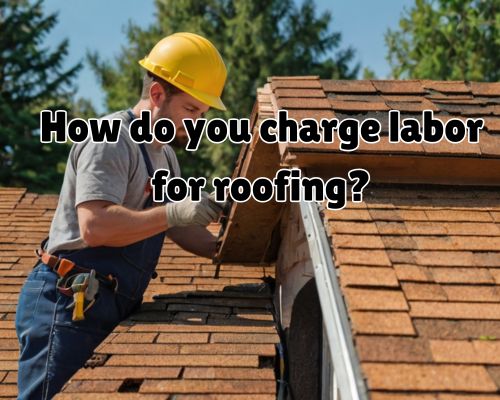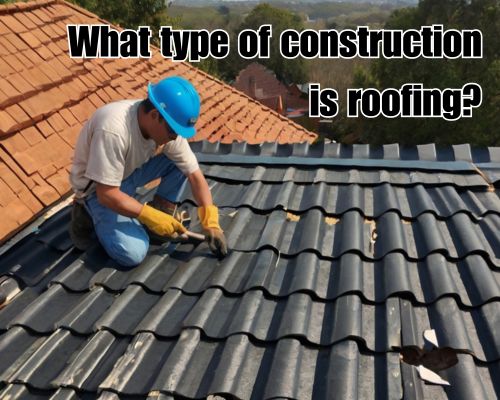For many homeowners in Melbourne, Australia, the temptation to roll up the sleeves and take on a DIY gutter installation or repair project is strong. With the rising cost of trades and increasing access to instructional content online, it’s easy to think you can handle guttering yourself. But is it actually worth doing your own gutters?

With Gutter Cleaning Melbourne, we’ll explore the cost, complexity, risks, and long-term value of gutter DIYs versus hiring a professional. We’ll examine what’s involved, what’s at stake, and when a trip to Bunnings Warehouse isn’t the wisest option—especially when Melbourne’s unique climate is factored in.
The DIY Allure: Saving Money, Gaining Control
The number one reason Melbourne homeowners consider doing their own gutters is cost savings. Hiring a licensed roofer or guttering contractor can be expensive, especially when factoring in labour, materials, scaffolding, and call-out fees. A typical gutter replacement in Melbourne can cost anywhere from $40 to $100 per metre, depending on the material and property type. For a standard single-storey home, that can mean $1,500 to $3,000 or more.
Contrast that with a DIY trip to Bunnings: Colorbond® guttering sections, brackets, and downpipes are readily available, with per-metre costs significantly lower—sometimes as little as $15 to $30 per metre. Add in elbow grease and a few tools, and you could theoretically complete the job for half the cost.
Sounds good, right? Not so fast.
Understanding Melbourne’s Guttering Challenges
Melbourne is infamous for its four-seasons-in-one-day weather, which places enormous strain on residential gutters. Sudden downpours, temperature fluctuations, hail, and strong winds can wreak havoc on guttering systems—especially those not properly installed.
Poor installation can lead to:
- Water pooling near foundations (inviting termites and mould)
- Sagging gutters from improper spacing of brackets
- Leaks at joins due to incorrect sealing or alignment
- Overflow due to poor pitch or inadequate downpipes
This isn’t just hypothetical. Local councils such as City of Melbourne and Moreland City Council often deal with complaints linked to stormwater runoff from incorrectly installed gutters. Non-compliance with local building regulations can also lead to insurance issues—something many DIYers overlook.
Do You Need a Licence to Install Gutters in Victoria?
Technically, if you’re working on your own property, you do not need a licence to install or replace gutters in Victoria. However, there’s a catch: if your work impacts stormwater drainage or structural elements, you must comply with the Victorian Building Authority (VBA) standards and obtain necessary permits.
Additionally, if you’re working at heights over 2 metres, WorkSafe Victoria safety requirements kick in. DIY installations without proper fall protection equipment can lead to serious injury—or worse. Every year, hospitals across Melbourne treat dozens of cases involving ladder-related accidents.
So, while legally permitted, DIY doesn’t always equal wise.
Gutter Types and Material Considerations
Melbourne homes typically use Colorbond® steel, zincalume, aluminium, or PVC for gutters. Colorbond® is a popular choice due to its durability and corrosion resistance in coastal or humid areas like Brighton or Frankston.
Each material has different installation requirements:
- PVC is lightweight and easier to cut, but less durable
- Colorbond® requires precise cutting, joining, and sealing
- Aluminium is prone to denting if mishandled
Installing gutter guards, fascia covers, and stormwater diverters adds another layer of complexity. Local suppliers like Stramit, Metroll, or even Bunnings carry these products—but knowing how to install them correctly is an entirely different skillset.
Labour vs. Legacy: Weighing Time and Skill
You’ll need more than enthusiasm. DIY guttering involves:
- Measuring and planning layout
- Ensuring correct gutter fall for drainage
- Cutting and connecting gutter sections
- Installing downpipes and brackets at precise intervals
- Sealing joins and testing water flow
Each of these steps must be executed accurately. If your fall is off by even a few millimetres, water will pool or overflow. Tools required include tin snips, drills, levels, silicone sealants, and possibly a rivet gun.
Melbourne tradies train for years to master these details. The average homeowner may take a weekend—or several—to do the same job. And if it’s wrong? You may end up hiring a professional anyway—to undo and redo the work.
Hidden Costs of DIY Guttering
Let’s say you save $1,000 doing it yourself. What could go wrong?
- A water leak from improperly sealed joins causes ceiling mould
- Overflow damages your fascia boards and timber eaves
- Improper drainage leads to concrete slab cracks
- Your insurance denies coverage due to unlicensed work
Each of these could cost you hundreds, if not thousands, down the track. Melbourne’s combination of clay soils, seasonal rainfall, and increasingly volatile weather patterns makes effective water management critical. Gutters are not just decorative—they are a structural protection system. For professional needs, just go to Gutter Cleaning Melbourne.
When DIY Might Make Sense
That said, if you’re confident, experienced, and the job is simple—say, replacing a single section of guttering or installing a new downpipe—DIY might be worthwhile. Particularly if your home is single-storey with easy access and you’re familiar with basic carpentry.
You can always outsource part of the job, too. Some homeowners choose to install the gutters themselves and hire a professional for final alignment and sealing. Local handymen or roofing specialists in suburbs like Preston, Dandenong, or Essendon may offer fixed-price inspections for under $200.
Professional Gutter Installers: What to Expect
Hiring a licensed gutter installer in Melbourne typically includes:
- Full assessment of gutter health and roofline
- Accurate slope and water-flow calculations
- Proper sealing and jointing using compliant materials
- Testing for overflow, storm resistance, and structural fit
- Clean-up and safe disposal of old materials
You’ll also receive a warranty—many providers offer 10-year workmanship guarantees, and if your installer is a member of the Master Plumbers Association Victoria, you’re further protected.
Final Verdict: Is It Worth Doing Your Own Gutters?
✅ Yes— if you’re confident in your skills, working on a small section, have the right safety equipment, and understand Melbourne’s drainage requirements.
❌ No— if the job involves full replacement, two-storey heights, complex rooflines, or if you value long-term property protection and insurance compliance.
For most Melbourne homeowners, the false economy of DIY guttering becomes apparent only after water damage appears. And by then, it’s often too late.
Sometimes the best DIY is knowing when to call a professional.
Bonus Tip: How to Choose a Guttering Contractor in Melbourne
- Look for reviews on Google or Hipages
- Ensure they’re licensed and insured
- Ask about experience with Colorbond®
- Request a written quote with breakdowns
- Confirm compliance with VBA regulations
Final Thoughts
In the world of home maintenance, gutters are both humble and heroic. They protect your home’s foundation, frame, and façade. While DIY may seem like a weekend warrior win, in Melbourne’s unpredictable climate, the smarter move might be professional help.
So, is it worth doing your own gutters? Maybe. But only if you know what you’re doing—and how much it’ll really cost if you don’t.








